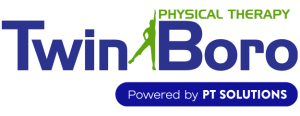Arthritis is the wearing, degeneration or loss of articular cartilage in a joint. Articular cartilage covers the ends of bone in a joint, and allows the bones to glide freely over each other, allowing movement at the joint. The three most common types of joint arthritis are osteoarthritis, rheumatoid arthritis, and traumatic arthritis.
- Osteoarthritis – The most common form of arthritis, osteoarthritis is a gradual wearing and degeneration of the joint surfaces or articular cartilage. Osteoarthritis is most common in people who are middle age and adults over the age of 50. Women are more likely to develop osteoarthritis, and it can affect one joint or both. There is no cure for osteoarthritis and its cause is unknown, though it may be related to aging and can also occur if the disease runs in the family.
- Rheumatoid arthritis – Unlike other forms of arthritis, rheumatoid arthritis is a systemic autoimmune disease that is not caused by common wear and tear on the joint. This condition usually affects joints symmetrically (for example, both knees, both wrists, both shoulders). Rheumatoid arthritis causes degeneration of the articular or joint cartilage. It can also affect the tissue that surrounds and lubricates the joint (synovium). If the joint surfaces and cartilage are not lubricated they can start to rub, causing wear. Rheumatoid arthritis can affect other parts of the body including organs like the heart and lungs, and can even cause fatigue. The cause of Rheumatoid arthritis is not fully known. It is considered an autoimmune disease where the cells of the body attack themselves.
- Traumatic arthritis – Penetrating or repeated trauma to a joint can cause arthritis. Damage to the cartilage occurs when too much pressure is exerted on a joint, causing the cartilage to rip or break into small pieces that become lodged in the joint. Holes in the cartilage develop scar tissue that can reduce the ability of the joint to move. The joint can be weak, and inflamed, causing pain.
Causes
Common causes of arthritis include:
- Genetics and family history can predispose individuals to developing arthritis and joint degeneration.
- Ligament or meniscus damage can affect the stability and integrity of the joint, placing more stress on the joint or articular cartilage. The increased stress and force placed on the joint surfaces can lead to wear and tear on the joint.
- Repetitive strain injuries can damage and accelerate wear on joint surfaces
- Obesity causes increased weight and pressure on the joints, when performing everyday activities. This puts added stress on the joints, increasing forces on the cartilage.
- Diseases of the joint cartilage
- Excessive use of steroids or steroid medication can result in degeneration of the joint and cartilage.
- Previous trauma to a joint can increase wear and tear and the likelihood of developing arthritis.
Symptoms
- Pain and achiness in the affected joint.
- Loss of motion of the affected joint. Stiffness may improve with movement.
- Noticeable swelling around the joint.
- Increased size or deformity of the joint
- Weakness may be present making it difficult to perform daily activities
- Cracking, crunching or joint noise called crepitus when moving the affected joint.
Physical Therapy Interventions
Physical Therapists are professionals, educated and trained to administer interventions. As defined by The Guide to Physical Therapist Practice, interventions are the skilled and purposeful use of physical therapy methods and techniques to produce changes consistent with the diagnosis, prognosis and the patient or client’s goals.
Your physical therapist will perform a thorough evaluation to assess and determine the following:
- Joint: a series of measurements will be performed to determine which joint is involved and the extent to which the inflammation is acute.
- Strength: resisted testing is performed to determine if there is associated weakness or strength imbalances.
- Flexibility: range of motion measurements will be taken to determine if there is reduced joint movement.
- Technique and ADL: the therapist will review what activities you have difficulty with and will help you make modifications in technique to reduce stress on the involved joint.
- Gait, Balance and Alignment: the therapist will assess your gait and balance on even and uneven surfaces. An assistive device such as a cane or walker may be indicated to improve safety, gait and reduce stress on the effected joint.
Physical therapy for arthritis must remain conservative at the onset to avoid aggravating the condition. Emphasis will be placed on rest, reducing the inflammation, protecting the joint and increasing the blood circulation for healing. Once the initial inflammation has reduced, a program of stretching and strengthening will be initiated to restore flexibility and improve strength to reduce stress on the joint. Taping, bracing or strapping to rest and protect the joint while promoting healing may be indicated.
Treatments
- Manual Therapeutic Technique (MTT): hands on care including soft tissue massage, stretching and joint mobilization by a physical therapist to improve alignment, mobility and range of motion of the affected joint. The use of mobilization techniques also helps to modulate pain.
- Therapeutic Exercises (TE) including stretching and strengthening exercises to regain range of motion and strengthen muscles of the joint and affected extremity to support, stabilize and decrease the stresses place on joint cartilage.
- Neuromuscular Reeducation (NMR) to restore stability, retrain the affected extremity and improve movement techniques and mechanics (for example, running, kneeling, squatting and jumping) of the involved extremity to reduce stress on the joint surfaces in daily activities. Taping, strapping or bracing may be indicated for joint protection and promote healing. Gait and balance training may be indicated in those that have issues with walking.
- Modalities including the use of ultrasound, electrical stimulation, ice, cold, laser and others to decrease pain and inflammation of the involved joint.

